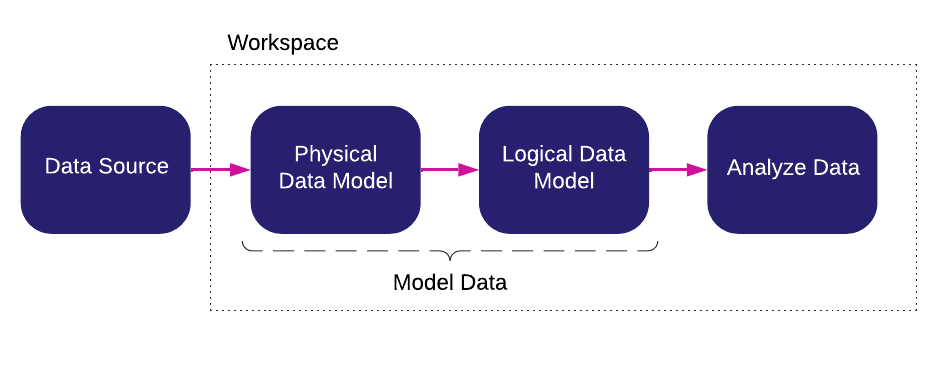Model Data
In this section you will learn how to create a data model for your data source, which is then used to analyze your data. In GoodData, the data model is broken down into the Physical Data Model (PDM) and Logical Data Model (LDM).

Before you create your data model, it’s worth asking yourself what business questions you want answered using GoodData analytics. That should be your guiding principle for designing a robust logical data model that will remain in use for years to come.
The Logical Data Model in GoodData
Data modeling in GoodData Cloud Native (GoodData.CN) revolves around the concept of an LDM. You create and modify the LDM for a particular workspace using our fully integrated LDM Modeler. See Logical Data Model in GoodData - Introduction to learn why the LDM is so valuable.
The LDM represents relationships between data objects in a workspace. The LDM provides a layer of abstraction so that you do not have to interact directly with the relational model of your database using SQL. The relational model is represented by a physical data model (PDM).
In the LDM Modeler, you assemble:
- Datasets with facts, attributes, and attribute labels
- Primary keys of the datasets and relationships between them
- Date datasets
GoodData.CN is designed to enable you to quickly create and modify LDMs and publish them to workspaces. However, be careful with how you assemble the components of your LDM. Whenever possible, deploy experienced modelers to your workspaces, particularly if they involve multiple interacting datasets or specialized use cases for your data.
If you are new to BI data modeling, invest time and effort to study data modeling practices prior to implementing a production GoodData.CN solution. Read the following articles to learn more about how to create a good LDM:
GoodData.CN is directly integrated with your databases. The LDM is directly mapped to the PDM that represents the relational model of your database.
When you are preparing an LDM that best fits your business requirements, you may realize that direct mapping to the PDM is not possible. In this case, we strongly recommend that you introduce a data transformation process to your database that would materialize the relational model so that the corresponding PDM is aligned with the LDM.
If you use a workspace hierarchy, the LDM is inherited and distributed to child workspaces from a parent workspace.
You cannot edit LDM in child workspaces. You can only view the LDM in a child workspace as it is inherited from the parent workspace.